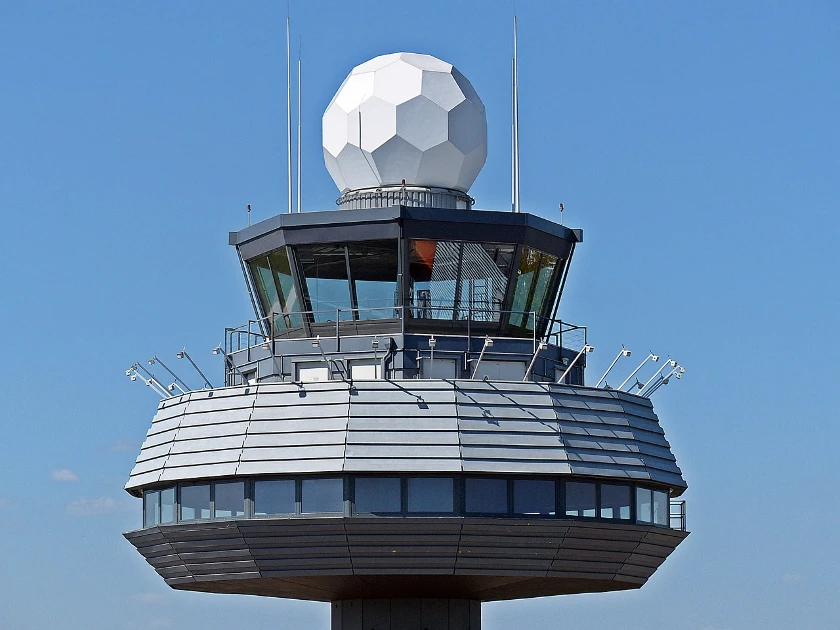I Don’t Know Where You Are: The Urgent Need To Modernize Air Traffic Control

Table of Contents
The Limitations of Current Air Traffic Control Systems
Our existing air traffic management systems are struggling to keep pace with the burgeoning demands of modern air travel. The reliance on outdated technology, communication bottlenecks, and inherent scalability issues pose significant risks to safety and efficiency.
Outdated Technology
Many ATC systems rely heavily on radar technology, a system developed decades ago. While effective in its time, radar has limitations, especially in complex airspace environments with multiple aircraft converging. The lack of precision and real-time data integration presents challenges in accurately tracking and managing increasing traffic volumes.
- Example 1: Primary radar struggles to distinguish between aircraft and ground clutter, especially in mountainous regions or adverse weather conditions.
- Example 2: Legacy systems often lack seamless data exchange between different ATC facilities, creating information silos and hindering efficient coordination.
- Example 3: The inability to handle the diverse array of aircraft types and their varying technological capabilities adds complexity and reduces situational awareness.
These limitations highlight the urgent need for upgrades to ATC infrastructure and the adoption of more modern technologies.
Communication Bottlenecks
Air-ground communication remains largely dependent on voice communication, a system prone to human error and misinterpretation. The lack of standardized data exchange between aircraft and controllers further exacerbates the problem.
- Example 1: Garbled voice transmissions due to radio interference or poor signal strength can lead to confusion and potentially dangerous situations.
- Example 2: The absence of automated data exchange forces controllers to rely on manual data entry, increasing the workload and the risk of errors.
- Example 3: The lack of a common data link system inhibits the efficient sharing of critical information between aircraft and ground control.
Modernizing air-ground communication through digital communication and data link systems is crucial for enhancing safety and efficiency.
Scalability Issues
Current ATC systems struggle to manage the exponentially increasing number of flights and the growing complexity of airspace. This leads to airspace congestion, increased flight delays, and reduced operational efficiency.
- Example 1: Air traffic congestion in major hubs leads to significant delays, impacting passengers and airlines.
- Example 2: The inability to efficiently manage airspace during peak hours necessitates flight restrictions and rerouting, impacting overall air traffic flow management.
- Example 3: The lack of sufficient capacity in current systems necessitates the construction of new ATC facilities, a costly and time-consuming process.
The Benefits of Modernizing Air Traffic Control
Modernizing air traffic control offers significant improvements in safety, efficiency, and security. The adoption of advanced technologies can revolutionize how we manage airspace, dramatically improving the overall air travel experience.
Enhanced Situational Awareness
Technologies like ADS-B (Automatic Dependent Surveillance-Broadcast) and data fusion provide highly accurate, real-time tracking of aircraft, significantly improving situational awareness and reducing the risk of mid-air collisions.
- ADS-B Benefits: ADS-B transmits aircraft location data directly, providing more precise and consistent tracking than traditional radar, even in challenging weather conditions.
- Data Fusion Benefits: Integrating data from multiple sources – ADS-B, radar, weather systems – provides a more complete and accurate picture of the airspace, enabling proactive conflict resolution.
- Reduced Reliance on Radar: Modern systems are less reliant on radar, mitigating its limitations, especially in low-visibility conditions.
Increased Efficiency and Reduced Delays
Automation and optimized flight paths, enabled by advanced technologies, can minimize delays and improve fuel efficiency. This translates to cost savings for airlines and a smoother experience for passengers.
- Automated Systems: Automated systems can handle routine tasks, freeing up controllers to focus on more complex situations.
- Optimized Routing: Sophisticated algorithms can optimize flight paths, reducing travel time and fuel consumption.
- Reduced Fuel Consumption: Efficient routing and reduced delays directly translate into significant fuel savings for airlines.
Improved Safety and Security
Modern ATC systems enhance safety through improved communication, automated alerts, and enhanced security measures, reducing the risk of accidents and improving response times to incidents.
- Automated Alerts: Systems can automatically detect potential conflicts and alert controllers, allowing for timely intervention.
- Enhanced Communication: Digital communication ensures clear and reliable transmission of critical information.
- Improved Security Measures: Modern systems incorporate advanced security measures to protect against cyber threats and ensure the integrity of air traffic data.
Technologies Driving Modernization
Several key technological advancements are driving the modernization of air traffic control systems globally.
Next Generation Air Transportation System (NextGen)
NextGen, and similar initiatives like SESAR (Single European Sky ATM Research) in Europe, represent a significant effort to modernize ATC. These programs focus on transitioning from ground-based radar to a satellite-based, data-centric system.
- Key Features: NextGen incorporates ADS-B, data communication, and automation to enhance safety, capacity, and efficiency.
- Implementation Challenges: The transition requires significant investment and coordination among various stakeholders.
- Overall Impact: Successfully implemented, NextGen will significantly improve the safety and efficiency of the US airspace.
Artificial Intelligence and Machine Learning
AI and ML are poised to revolutionize ATC by optimizing air traffic flow, predicting potential conflicts, and improving overall efficiency.
- Predictive Modeling: AI can analyze historical data to predict potential congestion and proactively adjust air traffic flow.
- Anomaly Detection: AI algorithms can detect unusual patterns in air traffic data, potentially identifying safety hazards before they occur.
- Automated Decision Support: AI can provide controllers with data-driven recommendations, enhancing decision-making in complex situations.
Data Analytics and Big Data
Analyzing massive datasets from various sources allows for improved decision-making and better resource allocation.
- Trend Identification: Big data analytics can identify trends in air traffic patterns, helping to optimize airspace management.
- Improved Forecasting: Predictive modeling based on big data can improve the accuracy of weather and traffic forecasts.
- Optimized Resource Deployment: Data analytics helps optimize the allocation of ATC resources, improving efficiency and reducing costs.
Conclusion: The Urgent Need for Action on Air Traffic Control Modernization
The limitations of our current air traffic control systems are clear: outdated technology, communication bottlenecks, and scalability issues pose significant risks to safety and efficiency. Modernizing ATC using advanced technologies like ADS-B, AI, and data analytics offers substantial benefits, including enhanced situational awareness, increased efficiency, and improved safety and security. The phrase "I don’t know where you are" should be a relic of the past. The future of safe and efficient air travel depends on the urgent modernization of our air traffic control systems. Let's work together to ensure "I don’t know where you are" is never a phrase heard again in the skies. Learn more about initiatives like NextGen and SESAR, contact your representatives, and advocate for investment in this crucial area.

Featured Posts
-
 Hqayq Mdhhlt En Jaky Shan Hyat Mlyyt Balmghamrat Walinjazat
May 07, 2025
Hqayq Mdhhlt En Jaky Shan Hyat Mlyyt Balmghamrat Walinjazat
May 07, 2025 -
 Kenny Couple Welcomes Baby Girl After Fertility Challenges
May 07, 2025
Kenny Couple Welcomes Baby Girl After Fertility Challenges
May 07, 2025 -
 Kelsey Plum And Kate Martin A Wholesome Courtside Exchange
May 07, 2025
Kelsey Plum And Kate Martin A Wholesome Courtside Exchange
May 07, 2025 -
 Stephen Curry Injury Update Coach Kerr Offers Positive Outlook
May 07, 2025
Stephen Curry Injury Update Coach Kerr Offers Positive Outlook
May 07, 2025 -
 Avoid Unforced Errors Warren Buffetts Leadership Wisdom
May 07, 2025
Avoid Unforced Errors Warren Buffetts Leadership Wisdom
May 07, 2025
